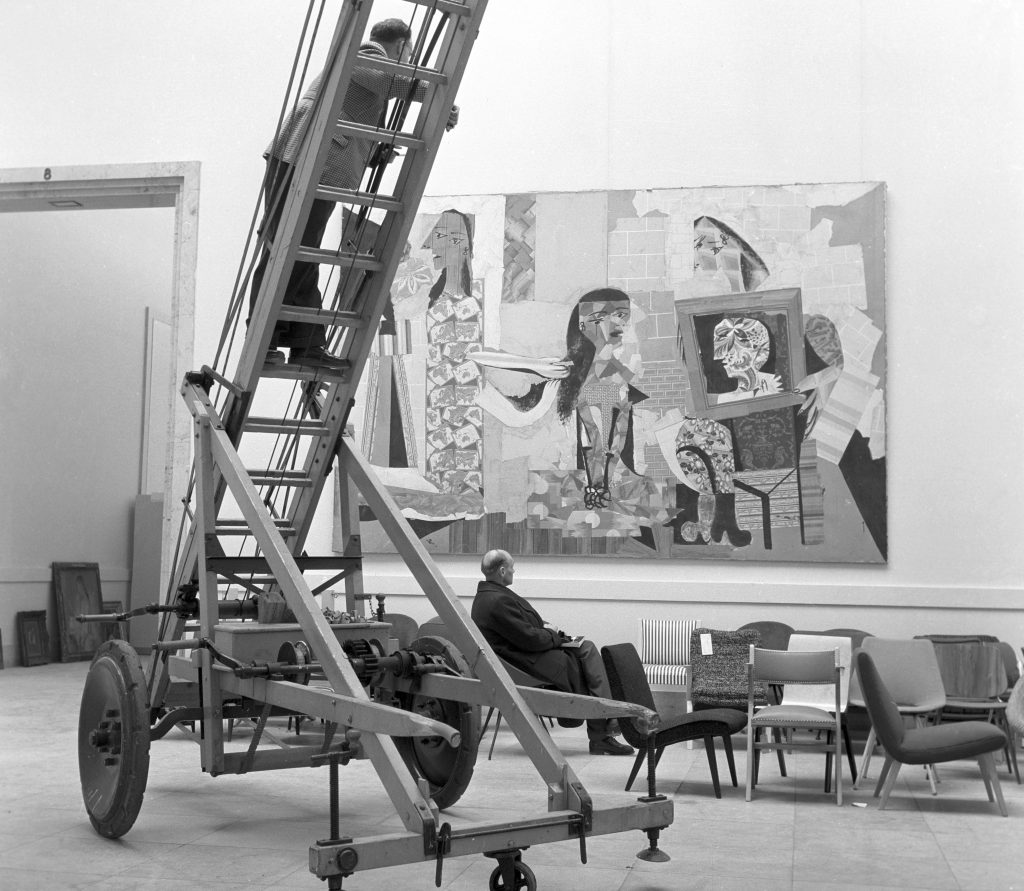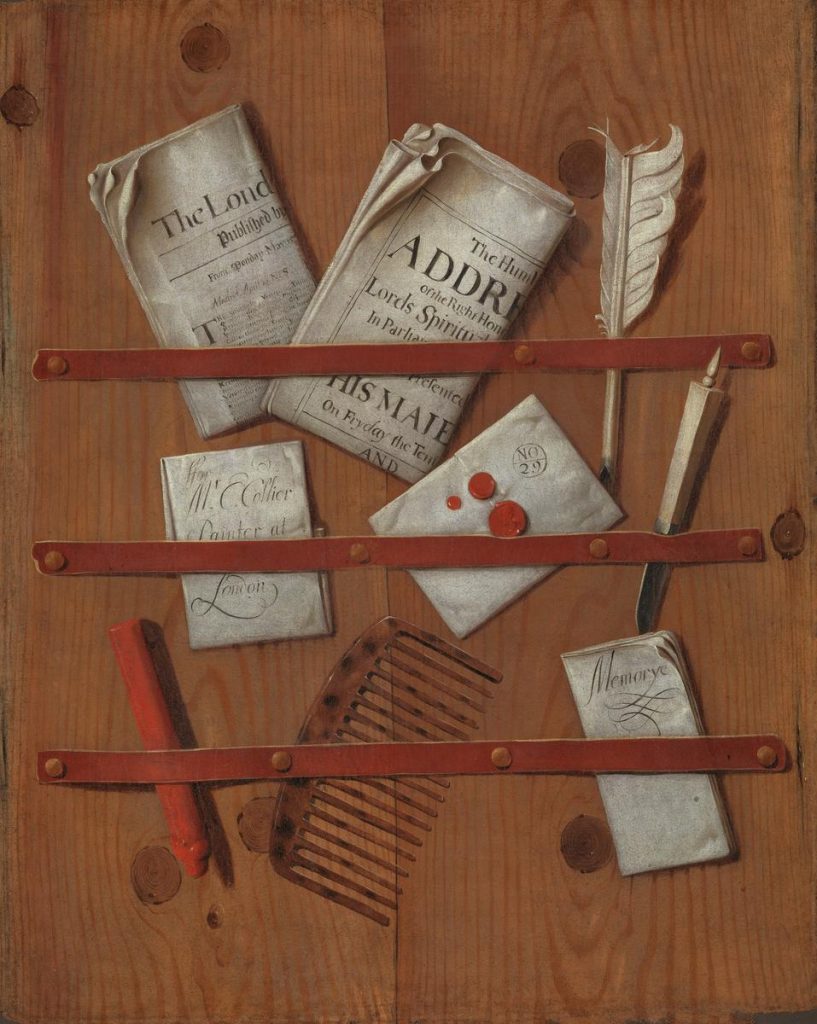Art History
Art Bites: Picasso and Braque Coined a New Art Term
Of course artists had previously cut and arranged materials, but the founders of Cubism were the first to give the technique its own name.

Between 1904 and 1907, the artists Pablo Picasso and Georges Braque worked together to develop Cubism, a movement which abandoned the traditional single point of view in a work of art and changed the trajectory of Western art history. The pair broke down the traditional understanding of vision, shattering perspectives and creating artworks with multiple viewpoints that complicated notions of what the world truly looks like. During the development of Cubism, the artists would coin the term “collage” to describe a new way of curating and bringing together materials in an artwork. Their neologism was an evolution of the french verb “coller,” meaning to glue or stick together.
The Oxford English Dictionary defines collage as “an abstract form of art in which photographs, pieces of paper, newspaper cuttings, string, etc, are placed in juxtaposition and glued to the pictorial surface; such a work of art.”
Before Picasso and Braque, artists had been using what would go on to be known as collaging techniques. Trompe l’oeil allowed artists to mimic the effect of combining different objects onto a canvas—like Edward Collier’s c.1699 work showing newspapers, letters, writing implements, and a comb attached to a wooden board with leather straps—and scrapbooking had been a popular past-time since the Victorian era, but the Cubist pair were the first to formalize “collage” as a distinct art form in itself with its own name.

Edward Collier, A Trompe l’Oeil of Newspapers, Letters and Writing Implements on a Wooden Board (c.1699), purchased 1984. Photo: courtesy of Tate.
Picasso and Braque began sticking newspaper cuttings to their canvases in 1912. Perhaps the most famous of these early collage works is Picasso’s Still Life with Chair Caning of 1912, an oval artwork with a piece of oilcloth imitating chair caning attached to its canvas and a length of rope used as its frame.
The pair first met when Braque visited Picasso in his Parisian studio in 1907. The two artists quickly became fast friends, close enough that Braque likened their relationship to “mountain-climbers roped together” and Picasso said they had to visit each other’s studios “almost every evening” to “see what the other had done during the day.” Their relationship deteriorated after Braque’s enlistment in the French army in 1914.





